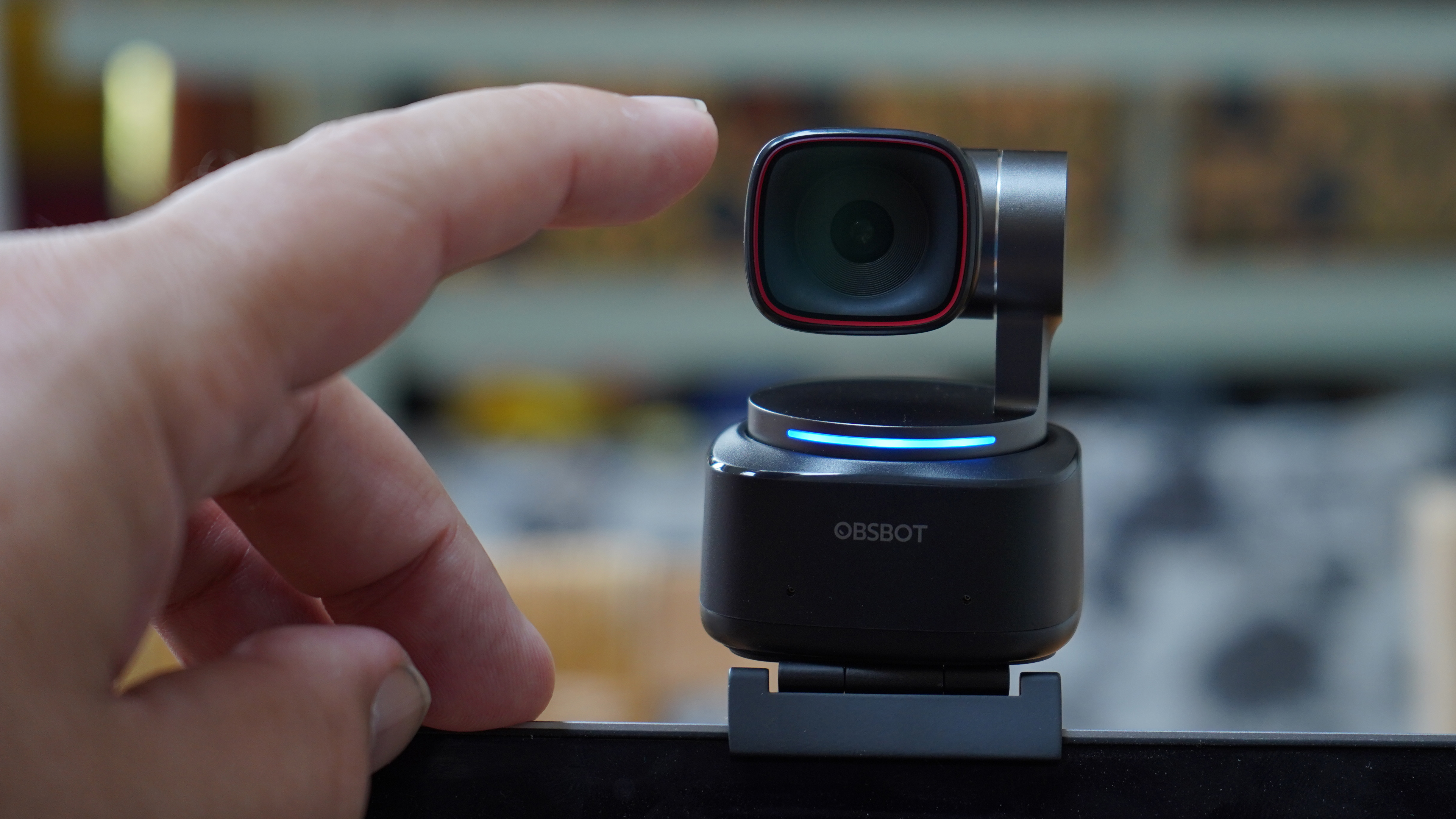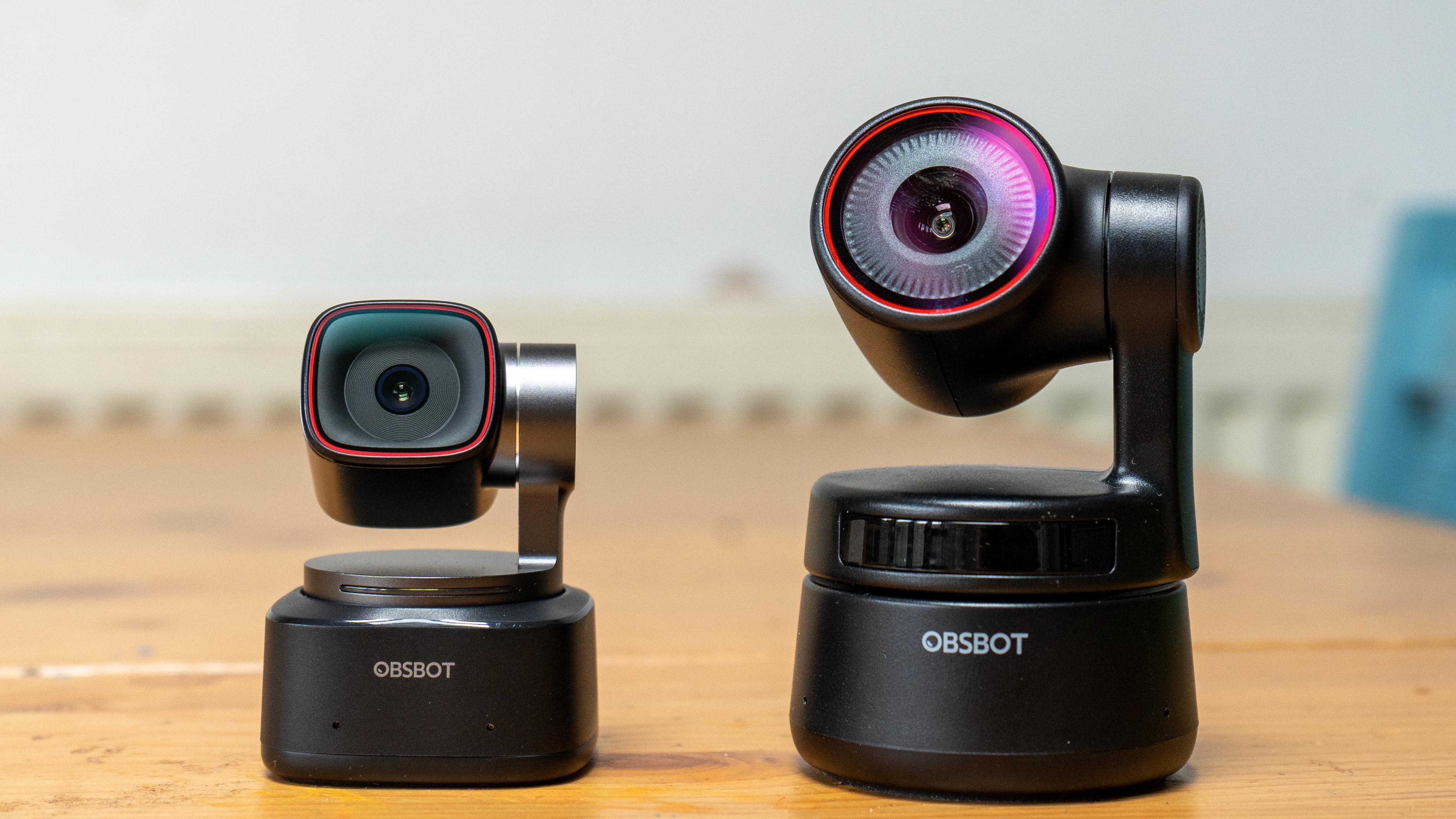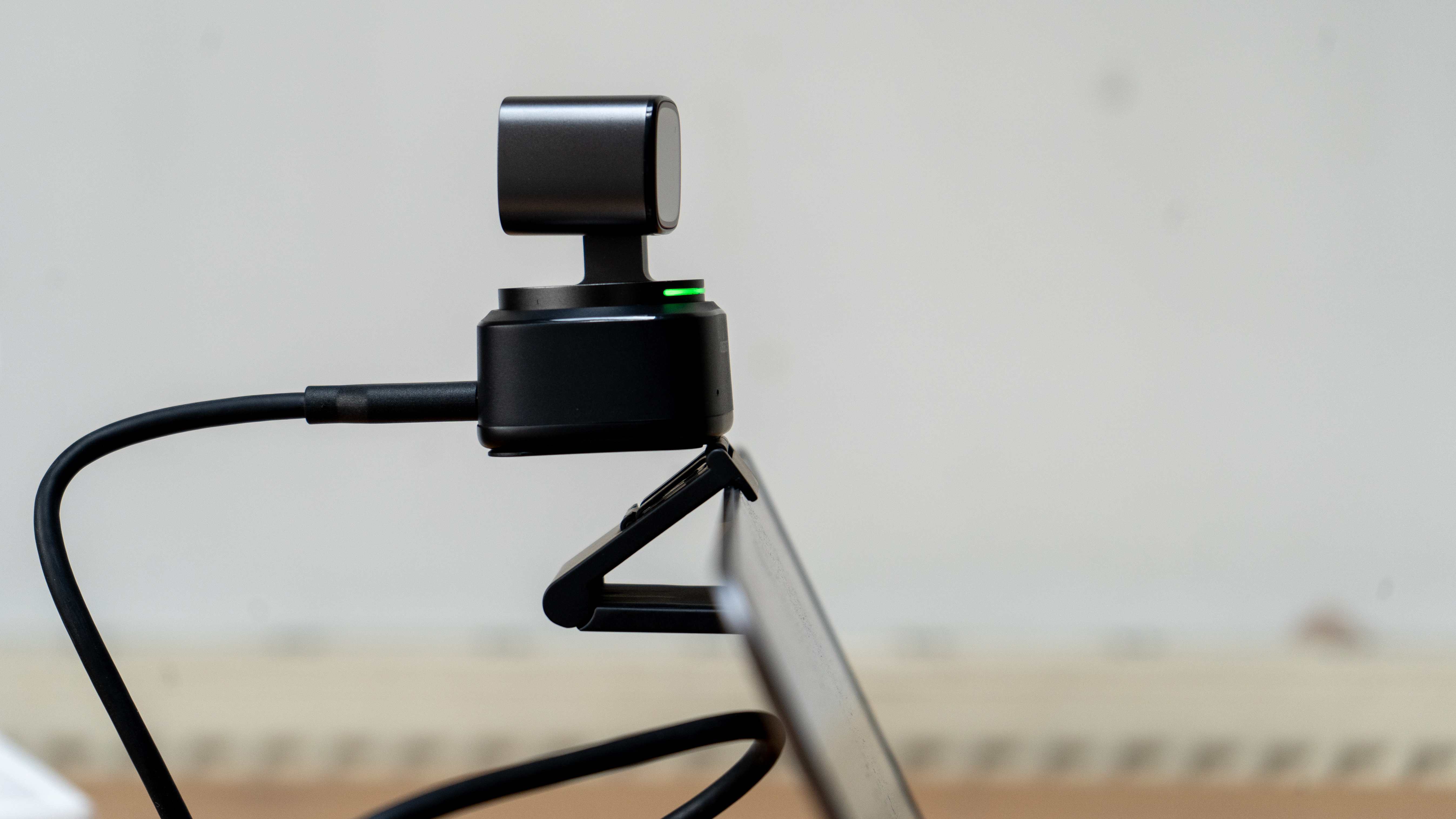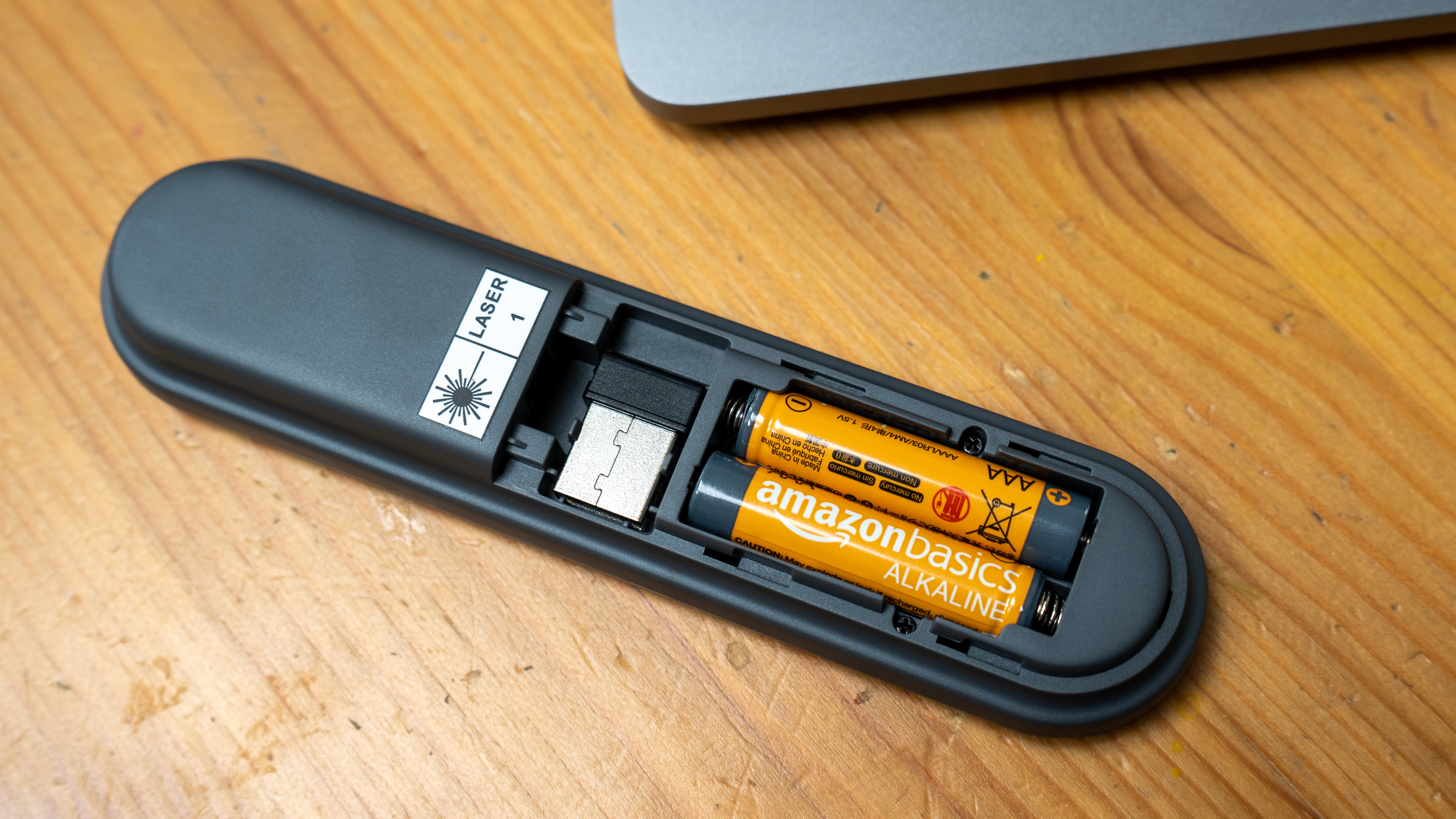
Obsbot's first AI webcam, the 'Tiny' was called that in comparison to the 'Tail,' a camera designed for streamers which was the company's debut product. As such it didn't actually need to be that compact; it easily fitted in one hand, and was a good bit smaller than the Tail, but it didn't look entirely comfortable balanced on a monitor.
That was easily forgiven, though, because, as we noted in our review, it – and the Tiny 4K that followed it – did an excellent job of keeping a subject in frame, offering much of the functionality of the Tail in an even more portable context.
Things have changed a little. Apple's digital subject tracking system 'Center Stage' offered a mainstream appeal for focusing on the action, while more recently Insta360's Link offered a physically smaller alternative to the Obsbot Tiny. Time, then, for the empire to strike back (launching, as it happens, on the very same day as Insta360 brings out another product – a bit of a rivalry there?)

Specifications
Video: 4K @ 30fps HDR
Image sensor: 1/1.5-inch / 50MP
Aperture: f/1.9
FOV: 85.5˚
AI: Gesture Control, Dynamic Gesture Control, Voice Control
Connectivity: USB-C, UNC
Size: 47 x 44 x 62mm
Weight: 99g (on our scales) 95.6g (official)

Key features
The Tiny 2 brings three significant new features over its predecessor (and that remains a device we are thoroughly impressed by). This edition has voice control, auto framing and desk mode.
This means the camera can be placed in more locations and still successfully track the target, following them using digital zoom as well as 2-axis pan and tilt of the camera. The AI tracks the subject as naturally as possible, but can also take direction from the subject and the Mac or Windows app, or the remote control.
Deep down it's built on better hardware, including a bigger dual ISO CMOS sensor which is capable of quicker focussing and better low light detail, and the information will be delivered more quickly thanks to the true USB 3.0 data transfer.

Build and handling
Obsbot are not a company to skimp on travel packaging, and once again we found the camera in a custom moulded hard case with room for the USB cable (with handy velcro tie) and monitor hinge. It took not a moment to unwrap and connect, whereupon the camera took a little look around, then decided it'd wait for me to download and install the software. Fair enough – it needed doing anyway as my test model needed a software update before we got to business.
The Obsbot app has gained a few more buttons, including the simulated makeup features, but is the same broadly sensible tool as I encountered when trying the Tiny 4K. That's great. It's cross platform, it doesn't take up too much screen real estate, and it allows
The smaller-than-before housing feels to be made of better quality materials, and seems to have a chrome-like shine in the tilt axis recess. It is magnetically attracted to the hinge, or it can be placed on a tripod.
When not in use, the camera can be automatically pushed down to face the base. It'll do this automatically after a while too – effectively a built-in privacy shield you can't lose.

Operation of the camera can be conducted entirely in software, or by taking advantage of the voice and gesture controls. Although these are a little quirky – not all requiring a "Hey tiny" prefix, they do work.
The bundle we tested included the remote, which has a USB-A adaptor stowed away in the battery compartment. This is the 'computer end,' and you plug it in just as you might a wireless mouse. The thing is its USB-A, with no adapter, which is oddly old-fashioned.
Nevertheless the remote (and whiteboard marker) is a handy option and also offers access to three preset camera positions you set up. There is a lot of the power of a true PTZ setup, and the remote – a newer version – feels well suited to the task. Or at least as well-suited as any non-analog control can be.

Performance
The camera quality is striking for something which belongs in the webcam category. The image is crisp but not aggressively so. The responsiveness of the focus was noticeably better than the camera's predecessor, and we didn't often notice a point it irked. The AI tracking, when engaged, also seemed to have little problem following me from being sat right in front of the device to the counter behind.
Subject tracking can follow not just a face, but a body, so looking away from the camera won't cause it to lose track of you and (we imagine some niche streamers might be interested to know) you can even wear a mask. There is also a whiteboard track which doesn't require sticking things around your whiteboard.
In good light video was flawless, but as the light the device seemed even better. In a room with not very impressive lighting, we still didn't detect the kind of noise seen on an average webcam. By default, the Noise Reduction is set to 'Weak' which seemed to work well in a dim room, as did 'Off' to be fair.


We did find that recording 4K straight from the app was a bit disappointing. It created an MKV file that seemed to have all the gloss and quality you'd expect of 4K, but moved a little reluctantly, like jello/jelly mixed without much water. There was no such issue when recording with a program like OBS, however. It seemed a shame, however, that the included app wasn't the best tool for recording with!
Final Verdict
If all webcams were this good then meetings and streaming would be a very different experience. The camera quality will impress anywhere you have the connection to support it, and the fact the AI is clearly the product of a few generations of software improvement is palpable.
The Obsbot's Tiny 2 app offers a lot of functionality – but it isn't too much, even when you're streaming because, thankfully, the control app is organized into tabs. An alternative comparison, Obsbot's original Tail tracking PTZ concept, is also seriously threatened by this device.
It is a lot to spend if you are just looking for a webcam, though. Too much, in all likelihood. By dispensing with the pan/tilt motors, Obsbot's own Meet HD is a much more realistic spend. We also thought it was a shame the specially designed remote control didn't immediately offer pairing with a modern Macbook thanks to its USB-A only adapter. An analog touchpad and Bluetooth would have been better, but it's not like the remote is necessary anyway.
Is the Obsbot Tiny 2 better than its main competitor, the Insta360 Link? By most measures, yes. It can go slightly wider, it has a bigger sensor, it can track hands and by zones, and it does look better. The software also seems to have more tricks, like blurry backgrounds and voice control. In most circumstances, we'd call it our favorite, though it does lack the ability to position its camera in vertical mode which means some social creators might still prefer Insta360's pricier option.







